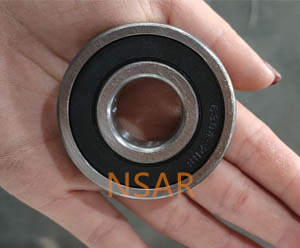
Ball bearing specification
NSAR, a professional deep groove ball bearings supplier in China, provides a broad variety of deep groove ball bearing with best customer service and quality assured. With more than 20 years of deep groove ball bearings manufacture experience, our deep groove ball bearing has been exported to United States, Canada, Mexico, Brazil, Argentina.NSAR can satisfy your bulk deep groove ball bearing customization needs,We provide 6012 bearing and 6000 bearings series and 6200 bearings series and pillow block ball bearings and 6300 bearing,you can products download.
Ball bearing specifications can vary depending on factors such as the type of bearing, its intended application, and the specific requirements of the machinery. However, here are some common specifications associated with ball bearings:
Bearing Type:
Identify the specific type of ball bearing, such as deep groove ball bearing, angular contact ball bearing, thrust ball bearing, or precision ball bearing.
Load Capacity:
Specify the maximum radial and axial loads that the bearing can withstand. This information is crucial for selecting the appropriate bearing for a given application.
Dimensions:
Provide the dimensions of the bearing, including the inner diameter (ID), outer diameter (OD), and width. This is typically expressed in millimeters or inches.
Speed Rating:
Indicate the maximum rotational speed at which the bearing can operate without causing excessive wear or heat generation. Speed ratings are often given in revolutions per minute (RPM).
Cage Material:
Specify the material used for the bearing cage. Common cage materials include steel, brass, or synthetic materials, and the choice depends on factors such as load, speed, and temperature.
Precision Class:
Precision class or tolerance level indicates the manufacturing precision of the bearing. Common precision classes include ABEC (Annular Bearing Engineers’ Committee) ratings in the United States or P (ISO) ratings in other regions.
Lubrication:
Specify the recommended lubrication for the bearing. Common lubrication options include grease or oil, and the choice depends on factors such as operating temperature and speed.
Seals or Shields:
Indicate whether the bearing has seals or shields to protect against contaminants. Seals provide better protection but may result in higher friction, while shields offer less protection but lower friction.
Noise and Vibration Levels:
Provide information on the noise and vibration characteristics of the bearing. This is crucial for applications where smooth and quiet operation is essential.
Material:
Identify the material used for the bearing components, such as the inner and outer rings, balls, and cage. Common materials include chrome steel, stainless steel, or ceramics.
Temperature Range:
Specify the temperature range within which the bearing can operate effectively. This is critical for applications in extreme temperature environments.
Corrosion Resistance:
If the bearing is intended for use in corrosive environments, specify its corrosion resistance properties.
Stainless steel or special coatings may be used for enhanced corrosion resistance.When requesting or selecting ball bearings, it’s crucial to communicate these specifications to ensure the right bearing is chosen for the intended application.Always refer to the manufacturer’s documentation for accurate and detailed specifications for a specific bearing model.

